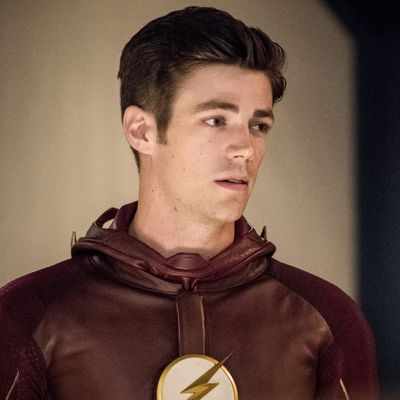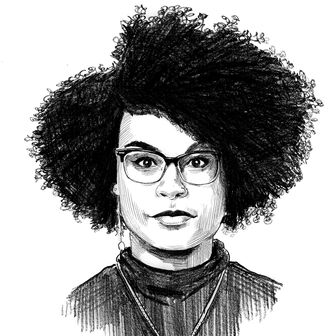
While DC’s cinematic universe is, to put it mildly, a mess, the television side of things has been nearly outstanding, with The Flash as undoubtedly the crowning jewel. The CW series upped the ante by introducing the multiverse, exploring the golden hued Earth-2, and bringing the beloved Wally West into the fold. The second season was also incredibly uneven, and left much of the show’s more interesting elements underdeveloped to focus on new characters who disappeared before the season’s end. But its third season makes a bold choice: It will take on the Flashpoint story line — and thanks to Barry Allen’s questionable decision to save his life — introduce it with a whole new timeline, opening the show up to new possibilities. The Flash is perfectly positioned not only to reach the heights of its first season, but also to surpass them. That is, if the following things happen:
Lighten up with the crossovers.
My main gripe with The Flash’s second season would be that its first half was overly concerned with setting up the spinoff, Legends of Tomorrow. This meant that it didn’t have time to develop certain dynamics as well as it should have, particularly when it came to its main villain. Story lines were rushed (like Cisco’s burgeoning meta-human abilities) or dropped altogether (pretty much anything that had to with its female characters).
Having to set up Legends of Tomorrow wasn’t organic, it was corporate synergy. It also negatively affected the crossover episode with Arrow, which focused on Vandal Savage, who became the Big Bad for Legends of Tomorrow. In many ways, crossover episodes tap into the messy fun of reading comics, in which the worlds of various heroes often intersect. But The Flash has always suffered a bit when characters from the other CW DC Universe shows make an appearance (Felicity Smoak, I’m looking at you). I’m not saying eliminate them, but until The Flash finds a way to make them work after the initial excitement of seeing these heroes interact with each other fizzles out, it should focus on its own narratives. Of course, that isn’t going to happen anytime soon. There are several happening in season three, including a musical episode with Supergirl and a four-show crossover involving The Flash, Arrow, Supergirl, and Legends of Tomorrow.
Enough with the speedsters as main villains.
Superhero stories love to play around with the idea that the villain is a warped mirror image of the hero. Superman and Lex Luthor. Batman and the Joker. Wonder Woman and Cheetah. But that dynamic will not make sense for every antagonist, every time. The first and second seasons of The Flash had very similar arcs for its main villains. Season one’s Harrison Welles, a.k.a. Eobard Thawne, was marvelously played by Tom Cavanagh and the arc made for great TV. But the second time around, when it was revealed that Jay Garrick was really Hunter Zolomon/Zoom from Earth-2? Not so much.
Speedsters and their mythos can be fun. And I’m not necessarily opposed to another popping up as a main villain (like Cobalt Blue). But seeing another older man pretend to be Barry’s mentor, only to reveal himself to be an evil speedster is not that interesting at this point. Why not liven things up with a new tactic?
Remember that Barry is a scientist.
It’s easy to forget that Barry works in the forensics department of Central City’s police considering his science skills only pop up when convenient. It’s usually Caitlin Frost, Cisco Ramon, and Harrison Wells that get to do the heavy lifting when it comes to the outlandish science that powers most of the show’s plots. This isn’t a bad thing, but treating Barry’s science background as an integral part of his personality and interests would flesh out aspects of the character that have felt somewhat forgotten after the first season.
Give Iris West a real arc.
The Superhero Girlfriend™ is undoubtedly one of the most abused archetypes in comic history, and adaptations aren’t helping. It doesn’t matter if you’re an icon in your own right like Lois Lane or completely integral to the mythos of your partner like Iris West. Shows like The Flash don’t know what to do with characters like Iris until the main relationship finally happens. Remember when it seemed like Iris was in grad school? The writers don’t either. She did have some great moments when we got to watch her badass Earth-2 counterpart. In episode 12 of the second season, Iris came across as brave, witty, and a decent journalist when trying to protect Wally. It proved that the writers can get her right when they give her something to do.
Actually, write all of your female characters better.
Now that I think of it, I can’t name any female character on The Flash who hasn’t suffered from bad writing to a degree. I’ve never been a huge fan of Caitlin Snow, but does her main arc really have to be one failed relationship or another? Women can be more than damsels in distress or the pawns villains use to get Barry’s attention. The female characters who have worked usually end up being tertiary characters. To be a truly great show, The Flash needs to learn how to write its female characters with consistency.
Stop with the placeholder love interests.
Since The Flash purposely held off on getting Iris and Barry together until the last possible moment in season two, we’ve had to watch one temporary love interest after another for these characters. These placeholder love interests end up taking up a lot of plot time, to the detriment of other story lines, even though we all know they won’t last. Remember when a potential relationship between Iris and her hot editor, Scott Evans, was briefly toyed around with? Yes, it was unethical from the jump. But why even introduce his character and that plot line only to drop it before much happens? But far more glaring was Patty, the increasingly chipper, sketchily written love interest for Barry last season. Everyone, including Joe West, seemed to be encouraging that relationship, even though she was neither compelling nor well-acted. Patty became a major focal point for a majority of the season, which left Iris cast by the wayside. (The show seems incapable of developing more than one woman at once, let alone letting them interact in meaningful ways all that often.) It’s okay for characters to be single, especially if the alternative is shoehorning them into uninteresting love interests who won’t last very long.
Keep Barry’s secret identity a secret.
This should be self-explanatory. But seriously, for a supposedly intelligent scientist and superhero, Barry has the common sense of a puppy. At this point, he is way too trusting of people. His secret identity is important in keeping those he loves safe and continuing his heroics, yet Barry reveals who he really is all the time. At this point, revealing his identity with such regularity without thinking it through is downright unbelievable and ridiculous.
Figure out the multiverse already.
I love that The Flash has introduced the idea of the multiverse. It is one of the weirder aspects of the DC Universe and opens up a lot of storytelling opportunities. But Earth-2 felt a bit too close to Earth-1 for my liking. Sure, it had a golden-hued, art-deco vibe and better technology. But considering Earth-1 already feels nearly utopian, Earth-2 isn’t that different. Instead of playing it safe, The Flash needs to flesh out its world-building when it comes to the multiverse.
Rethink your story lines for black characters.
One of the oddest arcs last season involved how Wally West was introduced as Iris’s previously unknown younger brother. Up until then, Iris’s mother was supposedly dead. But in a twist that feels right out of Empire, we learn that she wasn’t dead after all. Iris’s mother was a drug addict who endangered everyone around her. She left town when pregnant, only to crop up all these years later. This felt like a misguided, offensive way to further develop the West family. They couldn’t find another reason beyond her mother being a drug addict? Did Wally West really have to be a drag-racing criminal?
Conversations around diversity in television so often revolve around merely casting characters of color. But if they can’t be written well, what’s the point? The Flash has created a fascinating portrayal of single fatherhood with Joe. For its other black characters, it also needs to bypass retrograde stereotypes that should have been left behind decades ago.
Keep that Silver Age joy and weirdness alive.
It’s a mistake to believe that pathos can only be found when art is grim, dark, and unrelenting. The Flash has never adopted this viewpoint necessarily, but there were moments in its second season that felt tonally out of sync with the rest of the show. You can probably guess what I’m referring to: Hunter Zolomon.
It wasn’t enough to reveal that he was the main villain, Zoom. The writers also laid on a hamfisted origin in which an 11-year-old Zolomon witnessed his father’s abuse and eventually his mother’s murder. He was also a serial killer on Earth-2 who ended up condemned to a mental hospital straight out of the dark ages. On any show, this sort of empty-headed origin story would be laughable. But on The Flash, it’s especially bad. The greatest strength of the series has always been how it embraces the zany, off-the-wall nature inherent to the titular hero’s mythos. This a superhero who had a talking, buffed-up shark who wears cutoffs as an enemy, after all. The show is inherently silly, but it has also gracefully depicted its hero and the West family as compassionate. In season three, instead of tossing this aside, The Flash should lean into what made it great in the first place: a little bit of weirdness and a lot of heart.





